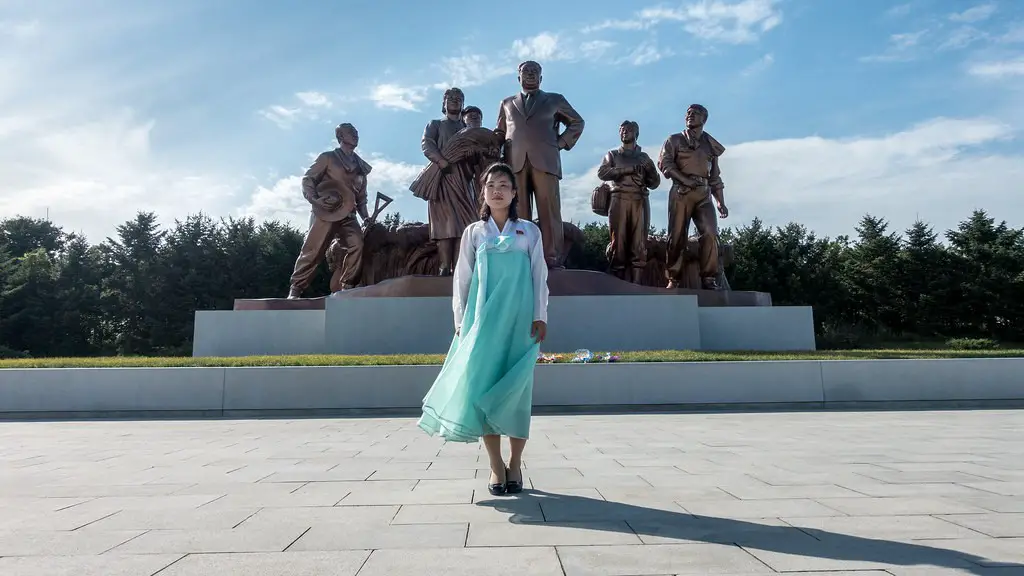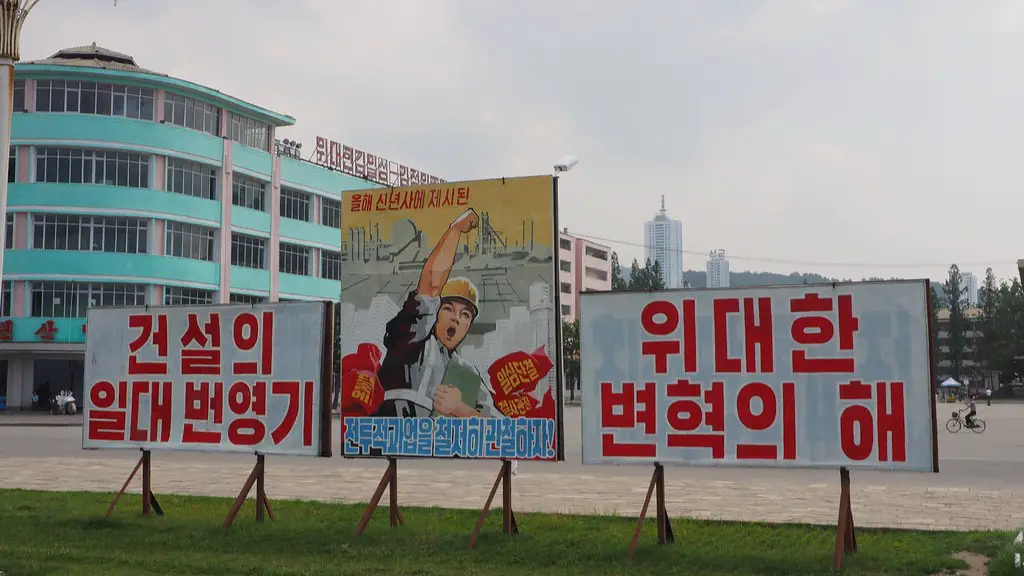Geographical Location
North Korea is located in East Asia, on the Northern half of the Korean Peninsula between China and South Korea. North Korea borders the Sea of Japan (or East Sea of Korea) to the East and the Yellow Sea, or West Sea of Korea, to the West. It is in the northern temperate zone with a continental climate. The terrain of North Korea consists mostly of mountainous terrain, with very flat and arable land situated in the western parts of the country.
History
The history of North Korea is steeped in invasions, occupations and war. Throughout millennia, the Korean Peninsula has been invaded, invaded and counter-invaded by a variety of nations who have sought out resources and land. In 1910, the Japanese colonized Korea and it wasn’t until 1945 that the peninsula was divided into two parts, North and South Korea. After World War II ended, the United States established a military demarcation line separating the two countries, which still marks the border between them.
Relations With The United States
The United States and North Korea have no official diplomatic relations, although the United States has maintained an unofficial presence in North Korea through the Swedish Embassy. The United States sees North Korea as a rogue state and has placed sanctions on the country due to its nuclear weapons program. The United States also maintains a military presence in South Korea in an effort to contain North Korea.
Geopolitical Issues
North Korea has often been characterized as a rogue state and has been condemned by the international community for its belligerent behavior and disregard for international rules and norms. In addition to its nuclear weapons program, North Korea is accused of violating human rights, persecuting dissidents, and engaging in other illicit activities such as money laundering, drug trafficking and counterfeiting. As a result, the United States and other countries have imposed stringent sanctions and embargoes on North Korea in an effort to pressure the regime to change its behavior.
Cultural Impact
North Korea became a central focus of popular culture around the world after the death of supreme leader Kim Jong-Il in 2011, which led to global fascination regarding the country’s secretive government and its reclusive ruling family. Movies, TV shows, and books have been produced that feature North Korea as a central plot point, while North Korea’s iconic dynastic leaders have become part of the global pop culture lexicon.
Media Environment
North Korea’s domestic media environment is highly restricted and tightly controlled by the government. Access to foreign media, including the internet, is strictly prohibited. North Korean media outlets are required to promote the regime and there is little room for dissidence or alternative points of view. Furthermore, the regime heavily censors the few foreign news sources that make their way into the country, ensuring that North Koreans only receive news that is approved by the government.
Tourism
North Korea has become a popular tourist destination in recent years for travelers looking for a unique experience. Tour packages typically include visits to monuments and other sites of historic & cultural significance, as well as meetings with local people. Tourists are generally restricted to predetermined sites that have been vetted by the government and are not allowed to wander the streets on their own. Although tourism has largely been curtailed due to the coronavirus pandemic, the regime has allowed some foreign visitors entrance into the country for various reasons.
International Trade
North Korea’s international trade is mostly conducted through its numerous official and unofficial trading partners, including China, Russia, India, and countries in the Middle East and Africa. The regime has attempted to maintain its economy through imports of fuel and other vital commodities, as well as exports of minerals, seafood and textiles. However, international sanctions have crippled the country’s external trade, resulting in significant economic hardships for its citizens.
Regional Politics
North Korea’s relations with its neighbors have always been tense, and the relationship with the United States remains complicated and often tense. Tensions between North and South Korea have largely been resolved since the 2018 Panmunjom Declaration, which aimed to improve the relations between the two countries and promote peace on the Korean Peninsula. China remains North Korea’s largest trading partner and closest ally, while Russia also maintains a cooperative relationship with the regime.
United Nations
North Korea has been a member of the United Nations since 1991 and maintains an embassy in New York City. The UN has put pressure on North Korea to denuclearize by imposing numerous economic sanctions, although this has done little to sway the regime. The UN has also supported various development initiatives aimed at improving the quality of life for the North Korean people.


